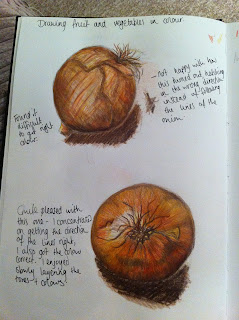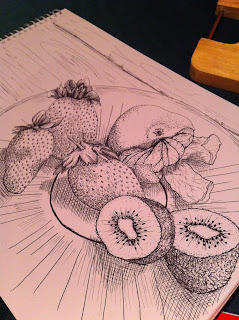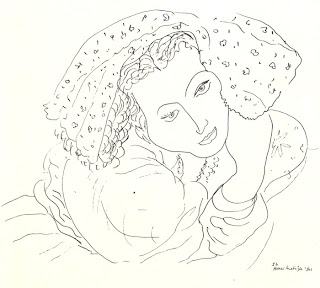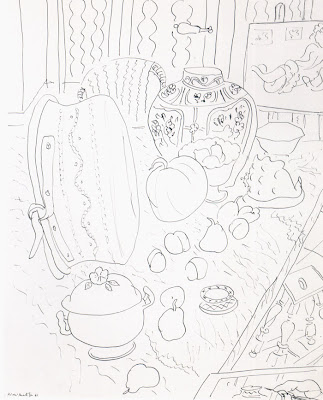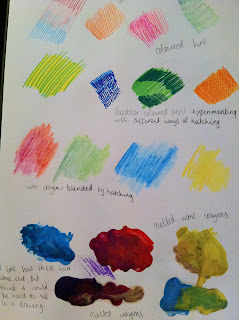The first drawing of the onion is bad. Bad bad bad, I think I used too many different directions of hatching and lines - so my drawing doesn't represent the true shape and depth of it. I used coloured pencil and didn't apply enough pressure, I think I had new exercise nerves. The second drawing turned out much better, I found I could follow the directions of line in the onion better, and I was more confident with applying colour. This is the first time I have used only coloured pencil in a drawing to create all the tone, so I was quite pleased with the outcome. In the past I have added tone with pencil, and then added the colour in over the top, but I can now see that this is the better way of adding colour and tone. It comes out much more natural.
The first apple didn't turn out too well - again, I didn't apply enough pressure and wasn't very confident with drawing, but the second attempt from a different angle turned out much better because I relaxed more. I kept going over the areas I had coloured to get accurate colour and tone.
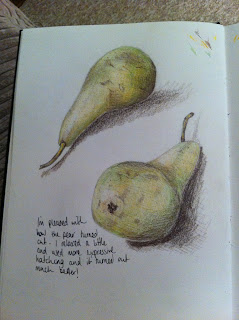
I'm much more pleased with how my pear turned out, I really started to relax and used more expressive gestures when hatching and I think it looks a lot better. This was my ping! moment, that made me realise how far I have come. Hatching with colour is now a new favourite technique of mine, and something I hadn't ever tried before! So I'm really pleased with the outcome.
I then moved onto the banana - I struggled at first, wondering how I was going to get the colour right, but again I started off with the darkest areas, then with an ochre colour pencil, I began adding in colour to the darker areas. Gradually I used three shades of yellow to get quite an accurate colour. I'm pleased with how this turned out - especially when looking back at the pencil tone drawing I did a couple of weeks ago. This is definitely an improvement. Unfortunately though I struggled with my casting shadow, on all of these drawings actually, they look odd to me!
I've really struggled with hatching, but now (finally) I get it! Hooray!
Will post the final drawings and composition sketches in the next couple of days.
